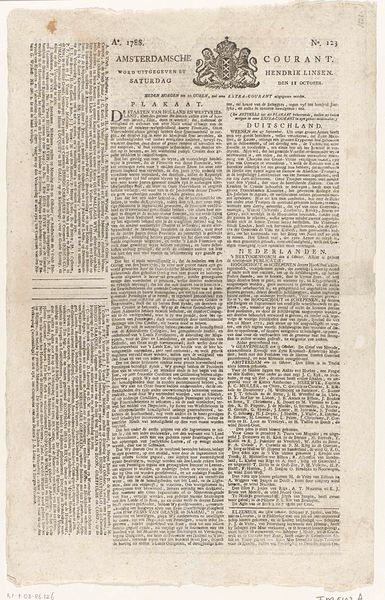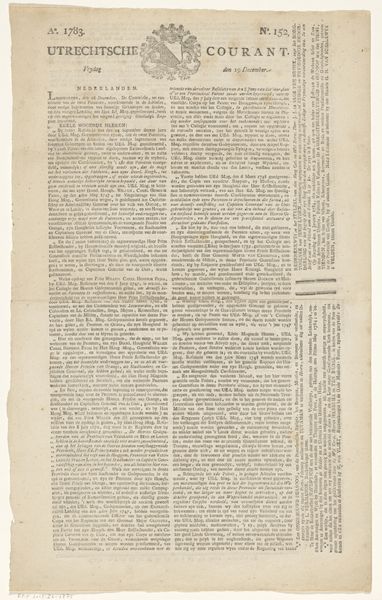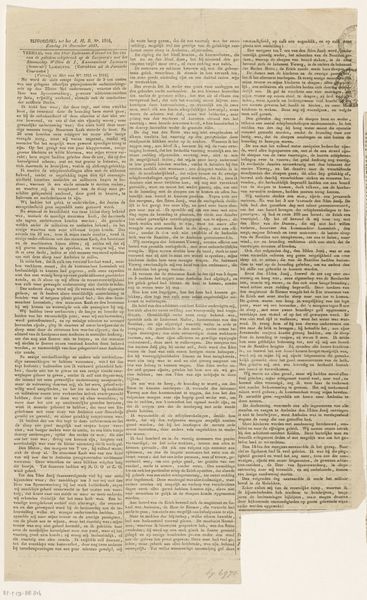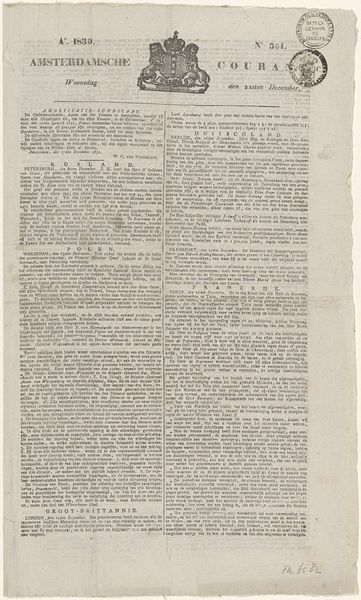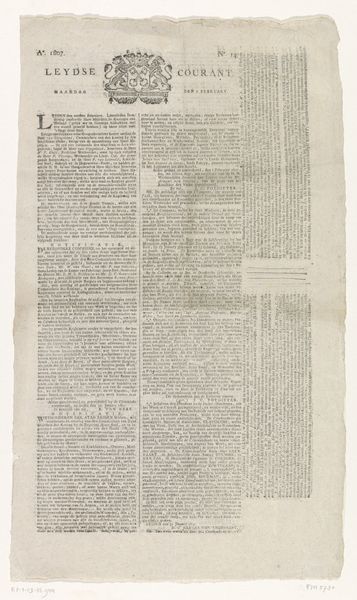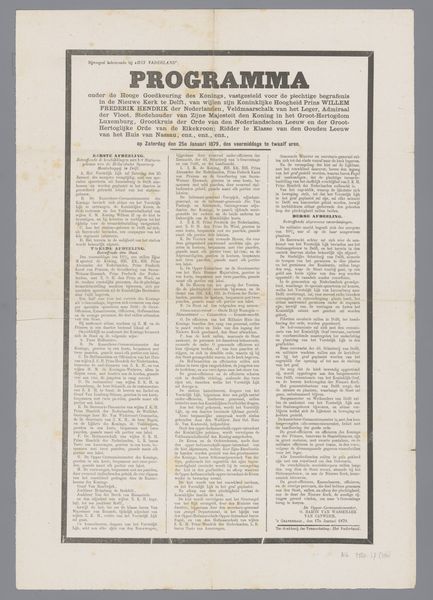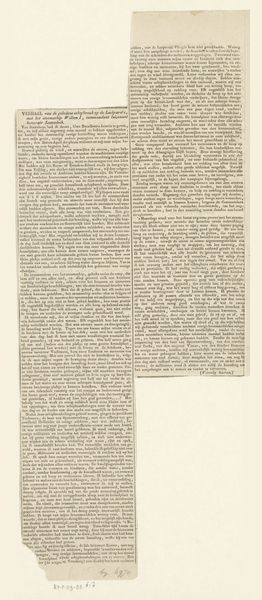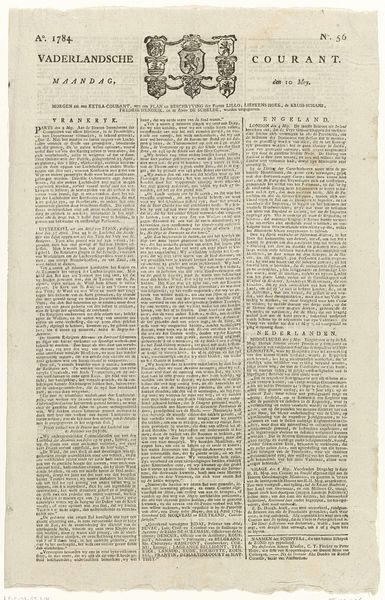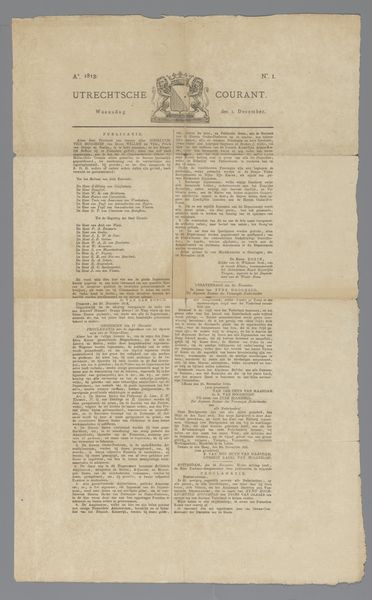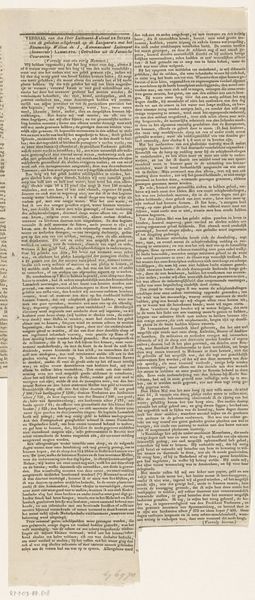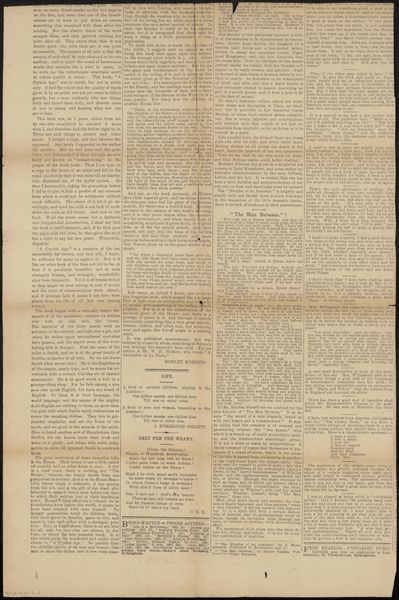
Opregte Zaturdagsche Haarlemsche Courant van 21 Oktober. Ao. 1837. No. 126 Possibly 1837
0:00
0:00
print, textile, paper, typography, engraving
#
dutch-golden-age
# print
#
textile
#
paper
#
typography
#
engraving
Dimensions: height 460 mm, width 270 mm
Copyright: Rijks Museum: Open Domain
Editor: This is an old newspaper, the "Opregte Zaturdagsche Haarlemsche Courant van 21 Oktober," probably from 1837. It’s a print on paper, incredibly detailed with dense typography. It looks overwhelming at first glance, almost like a textile pattern. What do you see in this piece? Curator: I see a fascinating intersection of text and societal context. Newspapers like this were pivotal in shaping public opinion and disseminating information. Look at the layout, the sheer density of the text – it speaks to a culture that valued the written word, but it also suggests a deliberate control of information. Consider, who had access to this paper? Who could read it? Editor: Presumably, wealthy and literate people. Was it a form of control then? Curator: Exactly! It acted as a filter, deciding what news reached the broader populace, subtly influencing their worldview. What are the narratives being promoted here, and whose voices are conspicuously absent? Consider the colonial context; news from “Groot-Brittannië” likely had significant implications for the Netherlands. And that imperial emblem at the top further underscores this relationship between power, media, and the public. Do you think this paper tried to promote any imperial agendas? Editor: I suppose so, or at least reinforced the status quo. The placement of the news, based on country, seems deliberate. Curator: Indeed. This newspaper, beyond being a source of news, embodies the intricate dance between power, access, and knowledge during the Dutch Golden Age. By understanding who produced and consumed it, we can decode its latent political and social messaging. What's your final impression of the paper? Editor: I see how a seemingly simple newspaper can be a powerful historical artifact that reflects power structures within society.
Comments
No comments
Be the first to comment and join the conversation on the ultimate creative platform.
